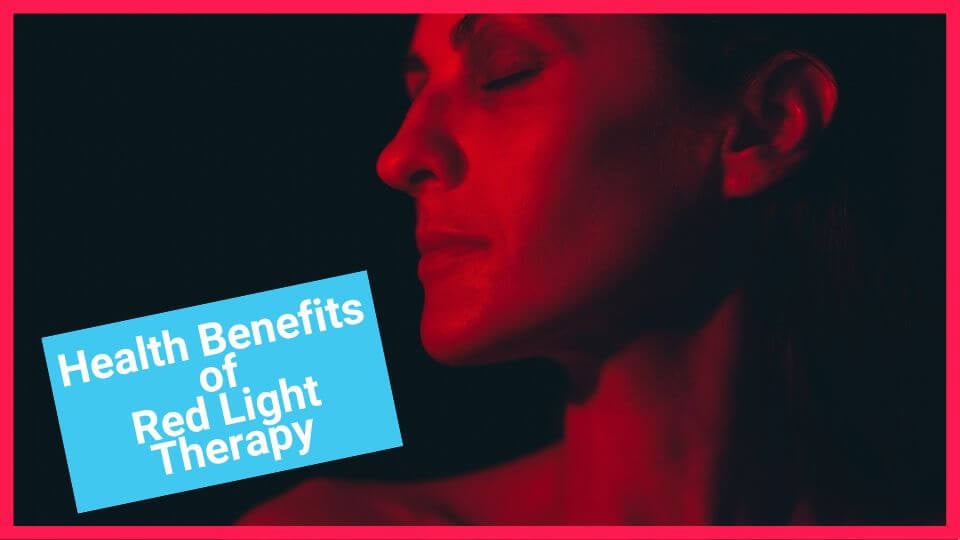
Light wavelengths are powerful. They bring plants to life, cause sunburns, and warm you on a chilly morning. Some wavelengths are even helpful for mental and physical health conditions. Learn why people are turning to red light therapy to see if it could help you achieve your wellness goals.
(This post includes affiliate links for which I may earn a commission at no extra cost to you should you make a purchase)
When did red light treatments start?
Laser light became a potential treatment in 1967 after Dr. Endre Mester used low-level lasers on rats. After exposure to red light, the rats recovered from wounds faster and grew more hair. Since then, researchers have studied red light as a potential treatment for numerous conditions.
What is red light therapy?
Red light therapy is a treatment that applies low-level red light wavelengths to a specific part of your body. The gentle light may treat conditions that affect the skin or organs. It’s noninvasive and doesn’t take long. People can leave red light therapy appointments and continue their daily routines without worrying about recovery time.

Benefits of repeated red light treatments
People schedule red light appointments to treat a variety of conditions. Although research is ongoing, there are promising signs that it helps numerous symptoms.
1. Migraines might be easier to manage
If you experience one of the eight types of migraines, red light therapy could ease your pain. When people sit under wavelengths of 660 nanometers (NM), the red light may reduce pain in neuropathies like migraines. The key is applying it cutaneously against the skin. Exposing your eyes to red light during a migraine might intensify your symptoms.

2. Skin condition symptoms may go away
Dermatologists may recommend red light treatments for people with skin conditions. The wavelengths can improve skin rejuvenation by reducing the cellular inflammation that worsens eczema and psoriasis flare-ups. People tired of only using medications or steroid lotions may become interested in trying this treatment.
3. Acne could improve
Applying a red light machine to acne-prone skin might prevent frequent breakouts. Low red light around 630 NM creates anti-inflammatory effects by activating cytokines that fight acne-inducing bacteria. The same research showed even better results when participants applied aminolevulinic acid to their acne before using red light machines. If you’re among the 50 million Americans struggling with acne, red light treatments could bolster your skincare routine.
4. Scars may fade
Scarring may leave dark or raised marks after wounds heal. When people with cutaneous scars undergo three weeks of red light therapy, their skin visibly improves and becomes more pliable. You could make intense scars less noticeable by applying red light treatments to them.
5. Signs of aging could slow
Aging inevitably changes the body. Women may experience frequent mood swings during perimenopause, while men must adapt to a changing metabolism in their 30s. Your appearance will also change as you develop wrinkles. Long-term red light therapy can minimize the visible signs of wrinkles by improving your skin’s firmness.

Is red light therapy a holistic treatment?
Red light therapy is a holistic treatment because it stimulates your body’s natural abilities to achieve physical and mental health results. You can use it to improve your overall well-being, which aligns with holistic values. The wavelengths empower your body to heal, complementing other natural treatments that address your health concerns.
Do dermatologists say that it’s safe?
The Journal of the American Academy of Dermatology found that photobiomodulation can improve health conditions for many people, including patients of diverse races, skin types, and ethnicities. Red light is safe, effective, and noninvasive. Its short-term exposure and low-level intensity limit potential harm.
Are at-home and in-office treatments equally effective?
At-home and in-office red light treatments may provide varying results. Red light therapy devices are available online. They come in various prices, but they may not be equally effective. Look for an FDA-cleared product and check for an NM rating. Products without those details might not have red-light-emitting bulbs.
Medical offices with red light equipment may be more effective because they’re medical-grade. Some devices are only available for commercial use, so you won’t be able to buy them as a consumer. However, many dermatology or holistic offices sell red light masks for people who want approved devices for at-home treatments.
Appointment fees also influence people’s choice of where to get red light therapy. Health insurance companies generally don’t cover red light treatments because they are optional. It may take longer to get results with an at-home device, but you’ll save money by avoiding recurring appointment fees.

Potential future uses of red light therapy
Researchers are still investigating other potential uses of red light applications. You may see treatments available for different conditions in the coming years.
Managing chemotherapy side effects
Chemotherapy has numerous side effects, including some that affect the skin. Patients may experience dry and itchy patches followed by redness and peeling. Applying red light to those areas may relieve symptoms by stimulating skin cells.
Red light research shows that the same stimulation can accelerate wound healing and may become a holistic resource for chemotherapy patients. More research will be necessary to definitively mark red light as a supportive tool for that use.
Reducing arthritis pain
Arthritis causes moderate to severe pain, but medication and physical therapy might not be the only treatments for long. Researchers are seeing notable effects from photobiomodulation in arthritis patients.
Due to their anti-inflammatory effects, laser treatments improve joint function and reduce pain in people with osteoarthritis and rheumatoid arthritis. While additional research is necessary to prove red light’s specific effects on joint pain, it’s a promising area for holistic arthritis treatments.
Treating depression symptoms
There’s significant research into the effects of light on people with depression. The condition often improves with additional sunlight exposure, which makes researchers curious about the impact of specific types of light.
Experts are looking into bright light therapy, which shines artificial light onto people with depression. Different studies use varying colors and intensity levels of the light. Early results show that artificial light exposure can reduce depression symptoms similar to sunlight. Further investigation into different wavelengths must happen before red light treatments are available for people with depression.

What are the restrictions on red light therapy?
While red light therapy is relatively safe, certain people may not be eligible. If you have sensitive skin, your dermatologist might recommend applying red light over a small area to see if there are any adverse side effects, like itchiness.
Your health history might also influence whether you’re eligible for this treatment. Photosensitivity can occur in people with autoimmune, genetic, or metabolic conditions that last a lifetime. Your side effects could worsen if you sit under intense wavelengths. Discuss your options with your doctor to double-check that it’s a safe treatment.
Some medications also make people more sensitive to light wavelengths. These include common prescriptions like certain antibiotics, oral contraceptives, antihistamines, and other drugs. Your doctor can clarify if you’re taking anything requiring shorter red light treatments or gentler wavelengths.
Explore red light therapy for your mental and physical health
Anyone interested in holistic treatments should consider red light therapy. The treatment is effective for numerous things, including migraines, eczema, and scarring. Watch for future updates on red light’s efficacy for other conditions, as research is ongoing in this promising field.
Disclaimer: This article contains affiliate links. This means that if you make a purchase after clicking on one of these recommended service provider links, like an insurance broker, or a travel agent, I may earn a commission – at no extra cost to you. [For my full disclosure, please see my DISCLAIMER page].





